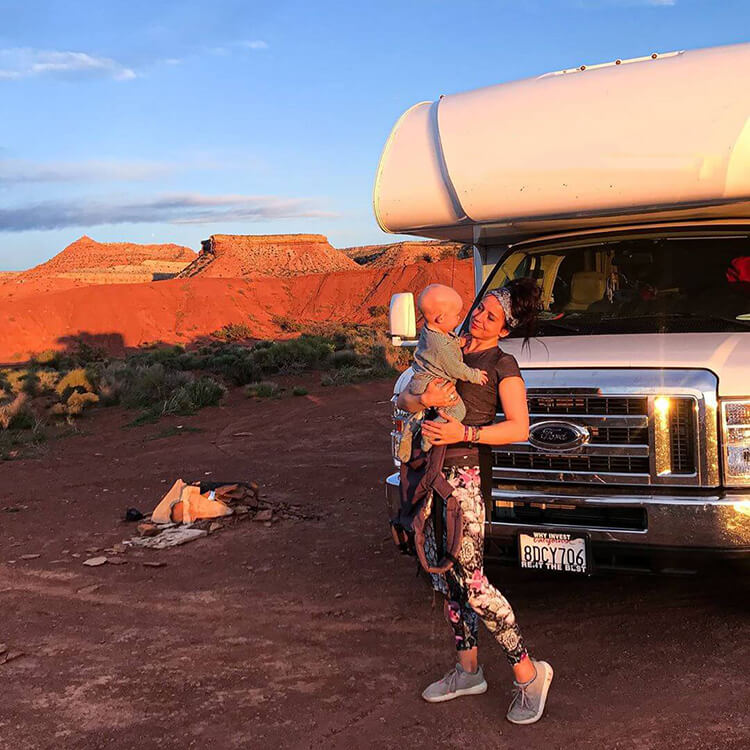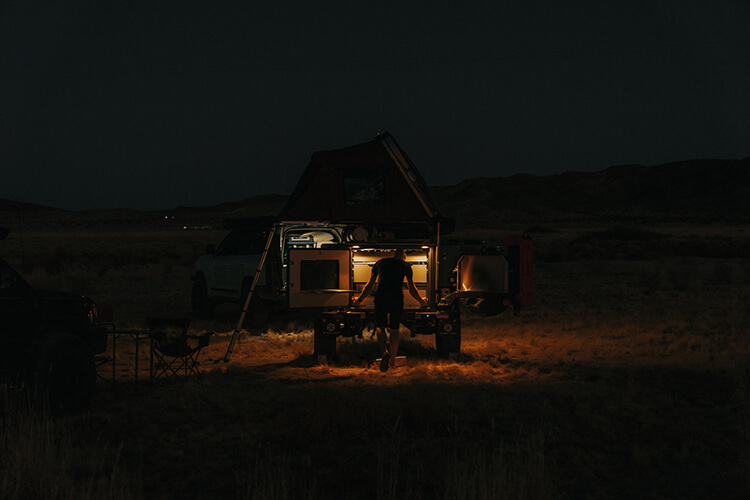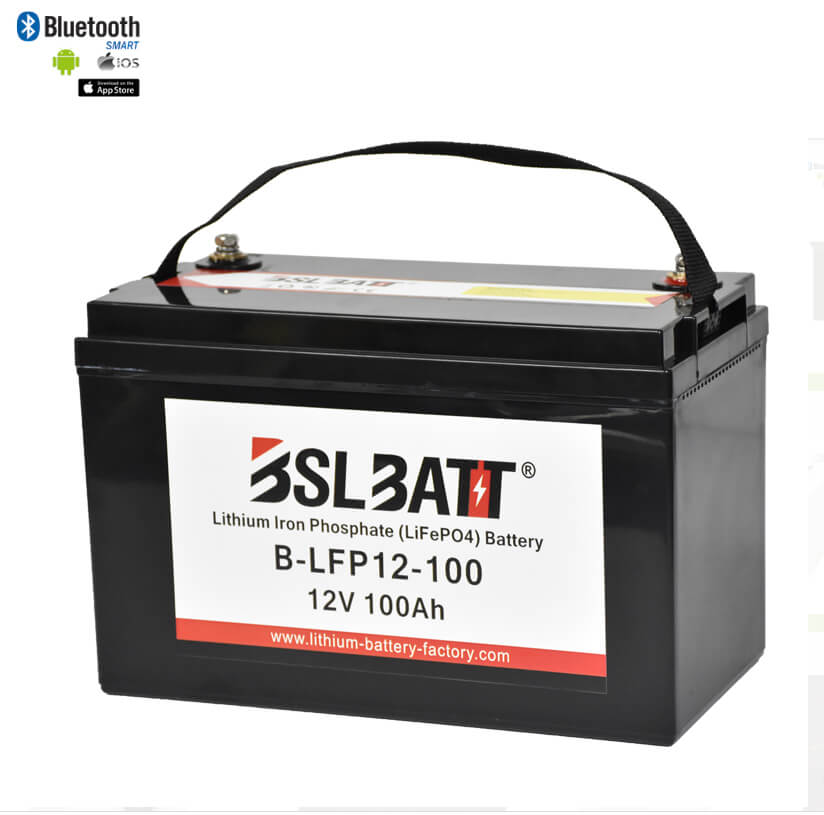Industry Application
Product Type
What to Know About Deep Cycle Lithium Batteries for Solar Storage
Do I need deep cycle batteries for my solar installation?What to consider when selecting a solar storage solution We talk about batteries as an energy storage device, but batteries also need to provide enough power for your application. So you’re excited about solar and have finally selected your solar panel kit. If you’re in an RV or van, you’ll need a way to store that energy produced from your panels. If you’re going solar at home, maybe you’re interested in going off-grid and utilizing battery storage. There’s a lot to take into consideration when deciding on a solar storage solution. Let’s break it down for you. The first thing to do when sizing your battery bank is to take an inventory of everything you need your batteries to power and determine your total energy requirement.
How do solar batteries work?Solar batteries store the energy that is collected from your solar panels. The higher your battery’s capacity, the more solar energy it can store. In order to use batteries as part of your solar installation, you need solar panels, a charge controller, and an inverter. Your solar panels will first need to be connected to a charge controller which will help monitor how much energy is stored in the batteries to prevent overcharging. Charge controllers will also shut down a system if the batteries become too depleted. Before being power your appliances, your batteries will need to be connected to an inverter to convert the DC energy collected from solar panels and converted to AC energy. When using batteries for solar panels as part of a home solar system, you’re able to store the excess electricity your panels produce instead of sending that energy back into the grid. Electricity will be sent to the grid if your batteries are fully charged and your panels are still producing energy. Every electronic device will indicate the electrical load it draws, on its label or on its packaging. This load will be provided either in amps or watts. If it provides amps, estimate – in hours – how long this device will be used each day and multiply it by the current in amps. This will give you the daily amp-hour requirement. If it lists watts, simply divide by the voltage to get the current in amps. Again, estimate – in hours – how long it will be on each day and multiply it by the current in amps. Now you have the amp-hours for each device. Add them all up and you’ll have your daily energy load. This will determine how much battery capacity you need. The second step is to determine the maximum power requirement. This can be done in amps or watts. Since you already determined the amps in the first step, you already have all the information you need. Determine the maximum current needed by adding up all the potential current draws that may take place at the same time. Now you know the current requirements of your battery. Regardless of what battery you buy, you need to be able to recharge them. If your recharging power source (for example, charger, solar panels, etc.) cannot meet your daily demands, you need to reduce your loads or augment your recharging power. Otherwise, your battery bank won’t get fully-charged and you will reduce the available capacity for the subsequent discharge. What should I consider when deciding on a battery for my solar panels?When shopping for batteries for your solar installation, there are some different factors to consider: price, capacity, voltage, and cycle life. Price: Batteries can vary from around $100 for the cheapest lead acid battery to more than $1,500 for a lithium-ion battery. Be sure to consider the ultimate lifetime and not just upfront costs, as you will have to replace lead-acid batteries before you will need to replace a lithium-iron battery. You’ll also need to do more maintenance on a flooded lead-acid battery, and we all know time means money. Capacity: Battery capacity is important because it measures the amount of energy you can store. If you need to power certain appliances for long periods of time, you’ll need more batteries to carry a bigger load. Capacity is measured in total amp-hours. Voltage: Be sure to check the voltage of the battery bank to ensure it is compatible with your panels and the rest of the system, particularly your solar panels. Panels typically come in either 12V and 24V options. Most RV’s and boats typically use 12V battery banks, so people usually stick with the 12V panels. The advantage of using a higher voltage battery bank is that it saves you money in the long run as you need less charge controllers and can use thinner cables for the same amount of power. If your energy needs are over 3KW, go for a 48-volt system. Large off-grid houses often use 48V. Cycle Life: This specifies the number of discharge and charge cycles a battery can provide before the capacity drops below the rated capacity. This varies sharply from technology to technology and is measured in the number of cycles.
Let’s say you came up with a daily use of 800Ah.Looking at BSLBATT’s 12V batteries, you have options from 5 – 500Ah. If you opt for the 12V, 100Ah B-LFP12-100, you’ll need eight batteries. If you go for the 12V, 300Ah B-LFP12-300, you’ll need three. After comparing the two batteries and figuring out the price difference between these options, you might decide to buy two RB300 batteries even though their total capacity will be greater than your needs. Better safe than sorry, good to have some breathing room, right? Not necessarily. Your battery doesn’t have excess capacity unless your recharging power supply does its job. If your recharge power supply is sufficient to fully recharge your battery bank in the allocated time, then you are paying for capacity you will never use. This is less of a concern with lithium batteries than with lead-acid batteries, since lithium batteries are not adversely affected by being in a partial state of charge. But an incomplete charging cycle does not give you the most accurate information about how much capacity you have left in your battery. Knowing you have 500Ah in a 500Ah battery bank is a different experience than estimating you have about 500Ah in a 600Ah bank.
Are solar batteries safe?Yes! In general, solar batteries are very safe. Issues that may arise come if they are installed incorrectly or the battery quality is low. Because of that, it is important to ensure batteries are properly installed and are purchased from a reputable manufacturer. Lithium iron phosphate batteries have a slightly higher risk of overheating than others if installed incorrectly or supplied from an unreliable manufacturer. However, in most cases, lithium iron batteries rarely pose a risk to homeowners. BSLBATT Deep cycle solar batteries have a BMS, which stands for Battery Management System. The BMS safely protects the battery from being used/charged during incorrect conditions. Lithium batteries high efficiency, usable capacity, and ability to not be affected by the partial state of charge make it easy to size your battery bank. Once you know what you need, BSLBATT’s selection of batteries in 12, 24, and 48 volts and a wide range of amp-hours makes it easy to find the right solution for you. As always, if you are not sure what BSLBATT battery is best for whatever you have in mind, let us know and we’ll work with you to find the right size bank of the right batteries to keep you powered up. Contact us here. |
A Guide to Choosing the Best 48V Lithium Golf Cart Battery
Would it be worth investing in a 48V ...
10 Exciting Ways To Use Your 12V Lithium Batteries
Back in 2016 when BSLBATT first began designing what would become the first drop-in replacemen...
BSLBATT Battery Company Receives Bulk Orders from North American Customers
BSLBATT®, a China Forklift battery manufacturer specializing in the material handling indust...
Fun Find Friday: BSLBATT Battery is coming to another great LogiMAT 2022
MEET US! VETTER’S EXHIBITION YEAR 2022! LogiMAT in Stuttgart: SMART – SUSTAINABLE – SAF...
Looking for new Distributors and Dealers for BSL Lithium Batteries
BSLBATT battery is a fast-paced, high-growth (200% YoY ) hi-tech company that is leading the a...
BSLBATT to Participate at MODEX 2022 on March 28-31 in Atlanta, GA
BSLBATT is one of the largest developers, manufacturers, and integrators of lithium-ion batter...
What makes the BSLBATT the Superior Lithium Battery for your Motive Power needs?
Electric forklift and Floor Cleaning Machines owners who seek the ultimate performance will fi...
































